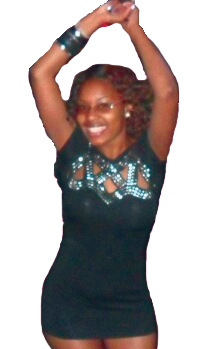
Ferris junior radiography major Jessica Parham, 20, of Southfield, died in December after complications surrounding her recent diagnosis of hemophagocytic lymphohistiocytosis (HLH), an autoimmune disorder. With this disorder, cells in the immune system don’t work properly to get rid of damaged or infected cells.
“Jessica was the kind of sister everyone would want and love,” Phylicia Parham, Jessica’s younger sister, said. “She was a great role model and gave great advice. If you didn’t have her as a big sister, you wished you did.”
Unfortunately, Parham wasn’t able to receive a lifesaving procedure: a bone marrow transplant, according to Jessica’s mother, Tara Parham. If she had received a bone marrow transplant, she would have most likely lived.
“Jessica had a beautiful spirit,” Tara Parham said. “She would do anything for somebody else.”
According to Tara Parham, Jessica was asked to be a case study while she was in the hospital. Jessica agreed in the hopes that she could save someone’s life. Tara explained Jessica as a caring person with a good heart. She stood up for anyone and helped to stop others from bullying.
Ferris TIP Scholars Coordinator Judy Watson became close with Jessica when she was her academic adviser. Watson stayed in contact with Tara Parham when Jessica became ill last fall. After Jessica passed, Watson was inspired to raise awareness at Ferris on how donating bone marrow can save lives.
“We have to give back,” Watson said. “If we’re healthy then it’s good to give. It’s all about us being a community and working together and helping each other.”
Watson made contact with the Red Cross to coordinate “Be The Match” on campus. “Be The Match” is a national marrow donor program.
According to bethematch.org, the first step of donating is a cheek swab. Tissue is then added to their registry and if a donor matches a patient in need, they will be contacted. Once chosen, the doctor will request that either bone marrow or peripheral blood stem cells (PBSC) are donated, depending on that specific patient. Up to 70 percent of patients in need of a transplant do not have a family member who is a match.
“‘Be The Match’ has the cure for many types of cancer: the millions of registry members and other supporters who step up every day to save lives,” read bethematch.org.
A donor may be asked to donate PBSC because the blood-forming cells in bone marrow can also be found in peripheral blood, according to bethematch.org. If a donor is chosen to donate PBSC, the procedure is nonsurgical. Blood will be taken and run through a machine that collects the blood-forming cells. It usually takes up to eight hours for the donation in one session or may take two sessions of four to six hours.
Donating bone marrow is a surgical procedure done under anesthesia. Doctors withdraw liquid marrow from the pelvic bone. The doctor will determine the best fit for the patient.
The Red Cross Blood drive and tissue matching for “Be The Match” will be held on March 26 from noon to 6 p.m. in the West Campus Community Center in honor of Jessica Parham.
“We couldn’t save Jessica’s life, but we can save other people’s lives and give other people a chance at hope,” Phylicia Parham said.
